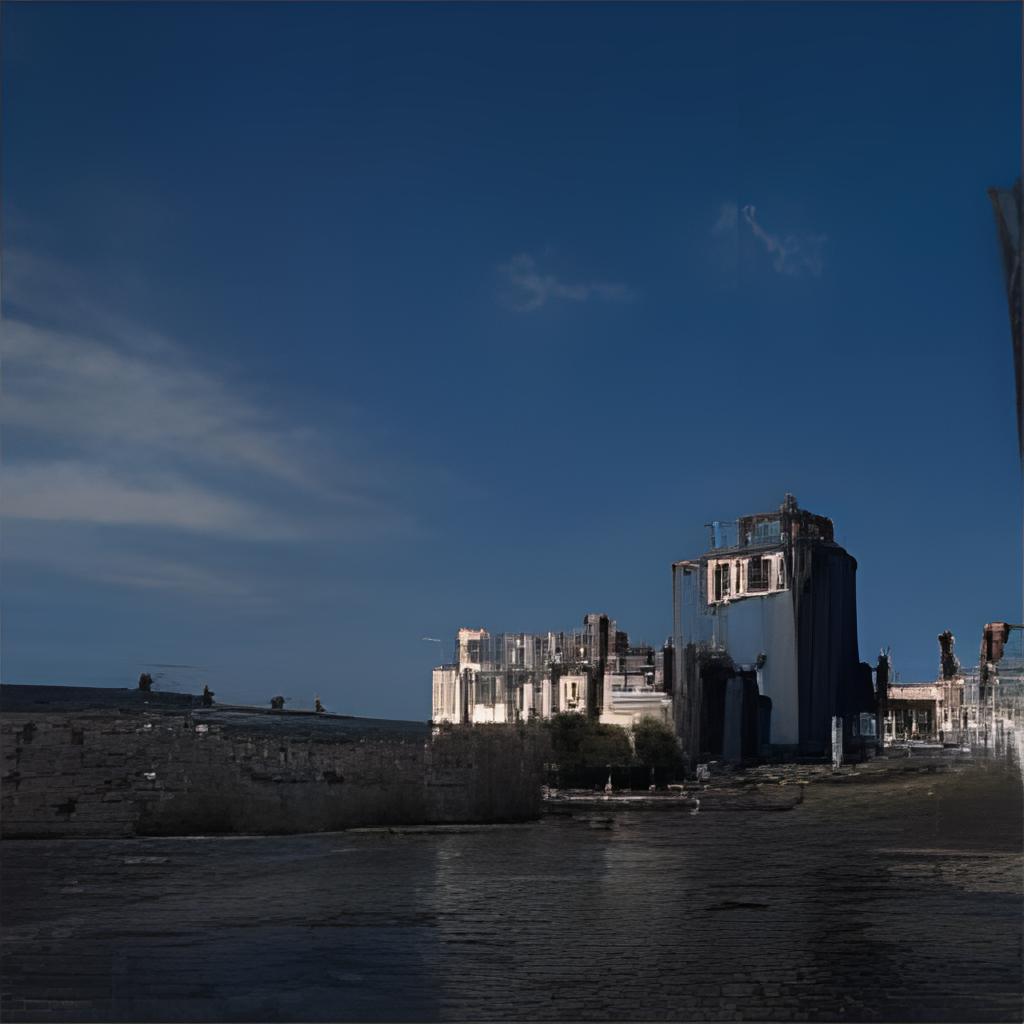Background
This note describes the work preceding the exhibition
Previous work
This project grew from work by William Ward and Stanislav Roudavski for the Place and Parametricism grant. The grant investigated literary places using Mervyn Peake's Gormenghast trilogy.
Our goal was to translate language about place into design parameters. Terms describing dimensions, lighting, geographical features, atmosphere, events, spatial relationships, and colour contribute to sense of place. We focused on colour, because colour words are identifiable, descriptive, rich, and translate to visual phenomena.
Another outcome of the grant was a series of three-dimensional models of spaces in Gormenghast. Three designers produced digital models based on their interpretation of the novel. Our original goal was to influence the model geometry, lighting, colour, and design elements using data from our text analysis.
We designed experiments to investigate the feasibility of this task. These attempts highlighted limitations of natural language processing that complicated our goals. Additionally, influencing digital models using abstract language data is a complex, novel task that exceeded the capabilities of the research team and the visualisation industry.
In response, we designed our experiments to reveal human language's inability to depict ecocentric places.
Can digital tools describe places?
Text analysis can identify parts of speech (e.g., nouns, adjectives, etc.), predict named locations and entities (e.g., Gormenghast Castle, Titus), and quantify word relatedness (e.g., black commonly appears with castle). Experimentation revealed the challenges of defining, quantifying and relating specific 'places' and phenomena.
The subjectivity of place
Constructing meaningful place representations from natural language requires prior knowledge of the work's author, cultural context, characters, environments, and events.
The reader's subjectivity---their life experiences, culture, capabilities, biases, knowledge---influences how they develop a sense of place from text.
Randomisation can approximate these variations, but such a model would include a huge number of variables based on theoretical understandings of factors such as culture, history, mood, and subjectivity.
Can digital tools produce an 'average' place?
Metrics based on large datasets (e.g., Google Ngrams) provide general answers:1 based on probability, a castle has ramparts; a castle is gray; gray is rgb(128,128,128); a gray castle looks like this:

In theory, artificial intelligence can generate an 'average' representation of a place. Average-based representations flatten the diversity that defines 'place'. Current methods cannot render three-dimensional environments with parametric atmospheres, temporality, geometries, and spatial relationships. Developing dynamic models that capture this diversity requires advanced skills in digital modelling, statistics, geography, mathematics, linguistics, data analysis, and artificial intelligence.
Towards multispecies place representations
- Faced with the infeasibility of our original goal
- Considered how research findings could support a theoretical (necessary) understanding of place that aligned with our research interests
- Research interest in ecocentrism, multispecies design, inclusive places
- Why is this significant?
Re-framing research goals
These limitations informed a new research direction. We sought to develop an understanding of places as constructed by agents with diverse capabilities, needs, and experiences.
Backlinks